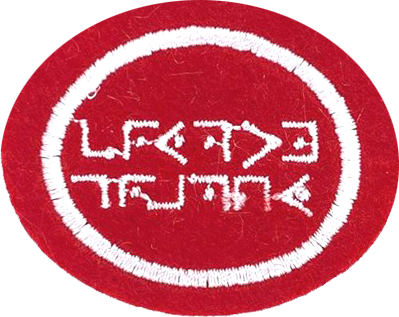Requisitos para la especialidad JA de Criptografía usados por la División Norteamericana
Nivel de destreza
1
Año
2025
Version
20.12.2025
Autoridad de aprobación
División Norteamericana
1. Definir la criptografía y hacer una lista de sus principales aplicaciones.
2. Definir los siguientes términos:
- a. Código
- b. Cifrado
- c. Esteganografía
- d. Texto sin formato
- e. Clave
- f. Criptografía de clave pública
- g. Función unidireccional
3. Definir cada una de las siguientes categorías de cifrado, dar un ejemplo de cada una y cifrar su nombre utilizando cada técnica.
- a. Transposición
- b.
Polybius Square
- c.
Square
- d.
Substitution
- e.
Polyalphabetic
4.
Investigate whether each item in the list below is a code, a cipher, steganography, or a plain text message.
- a.
Processing done by a computer to determine if a user enters a correct password
- b.
A Bible verse reference
- c.
The colors used on a traffic light to mean "Stop," "Go," or "Caution"
- d.
HTTPS:// used in a URL over the Internet
- e.
Forming a message by entering it into a grid row-by-row and reading it out column-by-column
- f.
Invisible ink
- g.
Navajo language used by the Code Talkers in World War II
- h.
Data representation via a grid of dots (QR codes) or lines (Bar codes)
- i.
Enigma machine used in World War II
- j.
Recording your computer password on a piece of paper
- k.
Signal used by Jonathan and David recounted in 1 Samuel 20:18-23
5.
Classical cryptology is the study of codes and ciphers used in the past. Discover how the following cryptographic forms were encoded in antiquity, and try to duplicate their processes to record a message:
- a.
Egyptian hieroglyphs, 1900 BC
- b.
Hebrew Atbash cipher, 500 BC
- c.
Julius Caesar's substitution cipher, 100 BC
6.
Prepare a message containing the Pathfinder Law enciphered in a Caesar cipher and indicate the key used.
7.
Use steganography to write the Pathfinder Pledge.
8.
Choose a cipher to encrypt a favorite Bible text and let another person decrypt it. Be sure to give that person the type of cipher and the key used.
9.
Decrypt a message made by another person using the key and cipher type they used.


